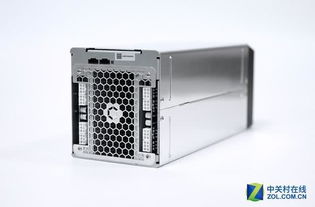The world of cryptocurrency mining is a dynamic and ever-evolving landscape, where innovation meets opportunity. Japanese crypto mining hardware stands at the forefront of this revolution, offering cutting-edge technology designed to maximize returns for investors and enthusiasts alike. In a market dominated by Bitcoin (BTC), Ethereum (ETH), and even the playful Dogecoin (DOG), the right hardware can turn a modest investment into substantial profits. Companies specializing in selling and hosting mining machines understand this potential, providing tools that enhance efficiency and profitability. Whether you’re a seasoned miner or a newcomer, leveraging Japanese hardware could be the key to unlocking higher yields in this competitive arena.
At its core, crypto mining involves solving complex mathematical problems to validate transactions on blockchain networks. For Bitcoin, this means powering through the Proof-of-Work (PoW) consensus mechanism with robust mining rigs that consume significant energy but deliver rewarding outputs. Japanese manufacturers have excelled in creating energy-efficient miners, often incorporating advanced cooling systems and silicon-based chips that outperform older models. This focus on efficiency is crucial, as electricity costs can erode profits, especially in regions with high energy prices. By hosting these machines in specialized mining farms, users can offload the burdens of maintenance and cooling, allowing them to concentrate on strategy rather than logistics.
Consider the rise of Ethereum, which transitioned from PoW to Proof-of-Stake (PoS) but still relies on legacy mining for some operations. Japanese hardware adapts seamlessly, offering versatile rigs that support multiple cryptocurrencies. This adaptability ensures miners aren’t locked into one asset; instead, they can pivot based on market trends. For instance, while BTC remains the gold standard with its halving events that boost scarcity and value, DOG has surged in popularity due to meme culture and community-driven hype. A well-chosen mining setup from Japan could mine DOG during bullish phases, capitalizing on its volatility for quick returns, before shifting back to more stable options like ETH.
One of the greatest advantages of Japanese crypto mining hardware lies in its integration with global exchanges. Platforms like Binance or Coinbase allow seamless trading of mined coins, and Japanese rigs often come with software that optimizes for real-time market data. This means miners can automatically sell or hold based on predefined algorithms, reducing emotional decision-making. Hosting services amplify this by providing secure facilities—think state-of-the-art mining farms with redundant power supplies and climate control. These farms not only protect against hardware failures but also offer scalability, letting users expand operations without upfront infrastructure costs.

Yet, maximizing returns isn’t just about hardware; it’s about strategy in an unpredictable ecosystem. Bursting with fluctuations, the crypto market can see BTC prices soar or plummet overnight, influenced by regulatory news or technological breakthroughs. Japanese miners, known for their precision engineering, help mitigate risks through overclocking capabilities and error-resistant designs. For ETH holders, this means preparing for network upgrades like the Merge, which could alter mining dynamics entirely. Meanwhile, DOG’s whimsical nature demands a different approach—perhaps mining in short, intense bursts to ride viral waves. Diversity in portfolio is key: don’t put all your eggs in one blockchain.
Diving deeper, the concept of a mining rig versus a standalone miner reveals subtle differences that impact returns. A rig typically encompasses multiple miners working in tandem, ideal for large-scale operations in dedicated farms. Japanese innovations have made these rigs more compact and user-friendly, appealing to both individual hobbyists and corporate entities. In contrast, a single miner might suit beginners testing the waters with DOG or ETH. Hosting providers in Japan often bundle these options, offering tiered services that scale with user needs. This flexibility ensures that whether you’re aiming for steady BTC rewards or speculative DOG gains, your setup aligns with your goals.
The environmental angle adds another layer of complexity and opportunity. As global scrutiny on carbon footprints intensifies, Japanese hardware leads with eco-friendly alternatives, such as water-cooled systems that reduce energy waste. This not only lowers operational costs but also positions users favorably in a sustainability-conscious market. For BTC and ETH, which face criticism for high energy use, adopting such tech can enhance long-term viability. It’s a rhythm of adaptation—short sentences for quick insights, longer ones to weave in the broader narrative of innovation and responsibility.
In the realm of exchanges, Japanese platforms like bitFlyer provide localized support, making it easier to convert mined assets into fiat or other cryptos. This integration streamlines the process from mining to monetization, potentially boosting returns through timely trades. Imagine harvesting ETH from your hosted rig, then swiftly exchanging it for BTC during a dip—such maneuvers are the lifeblood of profit maximization. The unpredictability here is thrilling; one day you’re navigating a bull run for DOG, the next, bracing for a BTC correction.

Ultimately, the path to maximizing returns on Japanese crypto mining hardware demands a blend of technology, strategy, and foresight. As the industry evolves, with new currencies emerging and regulations tightening, staying informed is paramount. Whether you’re drawn to the stability of BTC, the innovation of ETH, or the fun of DOG, investing in top-tier hardware and reliable hosting can transform your mining endeavors. In this vibrant world, where every hash computed brings potential rewards, Japanese solutions offer a competitive edge that resonates across the globe.
Leave a Reply